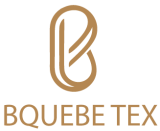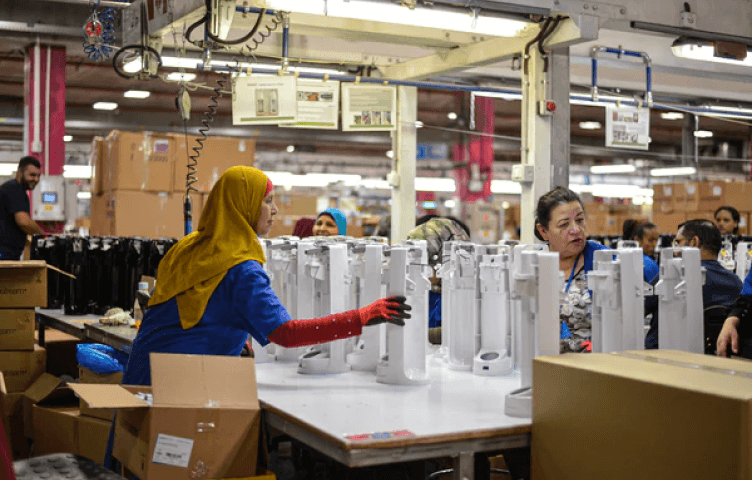Critical issues that cannot be overlooked during Final Random Inspection (FRI) include product conformity and compliance with safety standards. Another non-negotiable factor is adherence to the client’s specifications and quality requirements.
Final Random Inspection (FRI) is a decisive stage in product manufacturing, quality assurance, and supply chain management. This process involves the thorough examination of finished products before shipment to ensure they meet predefined quality standards and match the buyer’s expectations.
It’s essential for maintaining brand reputation, minimizing returns, and satisfying consumer demands. During FRI, inspectors scrutinize various product aspects such as functionality, performance, appearance, and packaging. This evaluation safeguards against defects and non-compliance, which could lead to significant financial losses and damage to business relationships. Ensuring a comprehensive FRI helps brands sustain customer trust and uphold market competitiveness by consistently delivering high-quality products.
Introduction To Final Random Inspection
Final Random Inspection (FRI) is critical in product quality assurance. It occurs right before shipment. This step checks product quality, quantity, and packaging. Many believe FRI is merely a formality. That’s a misconception. Indeed, FRI serves as a key defender of standards. It ensures that all products meet client specifications. Skipping this step can lead to shipping substandard items. This mistake may harm a company’s reputation. The belief that FRI can be bypassed is dangerous. Proper FRI prevents costly mistakes and customer dissatisfaction. Another myth is that FRI is costly and time-consuming. In fact, it saves money in the long run. Spotting defects early avoids expensive recalls. It’s a step companies should not ignore. Thus, FRI’s role in quality control is invaluable.

Credit: www.scribd.com
Navigating The Common Pitfalls
Critical issues during Final Random Inspection often stem from packaging and labelling. Many overlook this aspect. Labels and packaging ensure legal compliance and provide vital information to customers. Correct packaging protects the product during shipment. Labels must be clear, accurate, and easily understandable. Another key issue is insufficient sampling for large batches. Not testing enough samples can lead to missing out on potential defects. An effective inspection follows industry standards like AQL (Acceptable Quality Level). This helps in identifying all potential issues. A small sample from a large batch isn’t a good representation. Larger batches require more extensive sampling to ensure quality control.
Quality Over Quantity
Quality over quantity is vital during Final Random Inspection (FRI). Focusing on speed can lead to major issues. Such an approach often misses critical defects in products. Key aspects like material flaws or non-compliance with standards can slip by unnoticed. Stopping errors before products reach customers is crucial. Neglecting this can harm a brand’s reputation. It can also increase returns and complaints. A checklist-based system ensures nothing important is overlooked during inspection. Inspectors must thoroughly examine each item with care.

Credit: www.hqts.com
Product Specification Errors
Inaccurate product descriptions can lead to significant consequences. Misleading information might result in customer dissatisfaction, returns, and costly recalls. Ensuring specification compliance is crucial to avoid these issues. Regular checks and verification processes should be in place. This assures products meet advertised standards and quality claims. Detailed inspections include measurement verification, material testing, and functional checks. Manufacturers should conduct these inspections before shipment. This practice prevents potential discrepancies and complaints. By adhering to this protocol, businesses protect their reputation and maintain consumer trust.
Documentation Discrepancies
Correct paperwork is essential for a successful Final Random Inspection (FRI). Every document needs a review for accuracy to prevent issues. Inspectors rely heavily on the provided paperwork to assess the quality of products. Mistakes or mismatches in documents can lead to shipment delays. These errors may even cause the rejection of the entire batch. Consistency between records is vital. Companies should ensure that packing lists, invoicing details, and product specifications match precisely. Quality control teams must go through every document meticulously. This step confirms that all shipment contents are accurately represented. Not double-checking these details can result in costly misunderstandings and overlooked flaws. To avoid such scenarios, a comprehensive document review is crucial during the FRI process.
Credit: archive.org
Communication Breakdown
Clear instructions to inspection teams are crucial for a successful Final Random Inspection (FRI). Miscommunications can lead to significant issues, undermining the process’s effectiveness. To ensure accuracy and consistency, it’s essential to resolve any confusion or ambiguities before the inspection begins. Teams should receive detailed guidelines and specific criteria for the products they examine. This approach prevents costly errors. Frequent check-ins and updates during the inspection further reduce the risk of misunderstandings. Real-time communication tools can bridge gaps and promote a smooth workflow.
Ignoring On-site Testing Protocols
On-site testing protocols are crucial for guaranteeing product functionality. Tests serve as a filter to catch defects before products reach customers. Skipping these checks can lead to significant issues during the Final Random Inspection (FRI). Implementing proper testing methods is essential. These methods confirm that every item works as expected. Specialized equipment and tests simulate routine use to ensure durability and safety. Without this step, undetected problems may slip through, disappointing customers and damaging brand reputation.
Sidestepping Aesthetic Considerations
FRI (Final Random Inspection) is crucial for ensuring product quality. Visual defects can greatly diminish customer satisfaction. Products with visible imperfections are often rejected by customers. This leads to returns and affects brand reputation. Aesthetic quality standards are essential. To maintain high aesthetics, companies develop stringent quality guidelines. These guidelines help identify unacceptable flaws. Stitching errors, color inconsistencies, and surface blemishes are common issues. A clear set of standards helps inspectors assess products effectively. Strict adherence to these standards is necessary. It ensures uniformity across all products. Consistent quality is what customers expect. It builds trust and loyalty with the brand. Ignoring aesthetic standards can risk a product’s market success.
Subpar Workmanship
Subpar workmanship undermines product quality. Products with poor craftsmanship fail to meet standards. This leads to increased returns and dissatisfied customers. Product integrity is at risk when defects go unnoticed. During Final Random Inspection (FRI), thorough checks are vital. Inspection teams must spot issues like uneven stitching or misaligned components. These defects might cause safety hazards or unexpected breakdowns. Experts use special tools and techniques to detect such problems. They ensure that products are consistent and reliable.
Handling Nonconformities
Dealing with nonconforming goods during Final Random Inspection (FRI) is crucial. Addressing these issues requires a two-pronged approach: immediate action and long-term prevention. Teams must first identify and quarantine the defective items. Clear communication with suppliers about the defects is essential. This ensures alignment on the nature of nonconformities. For long-term improvement, companies should analyze the root causes of defects. It’s vital to implement corrective measures to prevent recurrence. Enhanced quality control processes or supplier education programs can help. Below is an example of steps to manage and prevent nonconforming goods:
| Step | Action |
|---|---|
| 1. Identify | Spot nonconforming items |
| 2. Communicate | Talk to suppliers |
| 3. Quarantine | Isolate defective goods |
| 4. Analyze | Find the root causes |
| 5. Correct | Take preventive steps |
| 6. Educate | Train the supplier |
Conclusion: Elevating Inspection Standards
Quality assurance plays a pivotal role in Final Random Inspection (FRI). Issues that require avoidance are crucial for ensuring product integrity. By adopting strict inspection standards, businesses can mitigate risks. Implementing robust inspection protocols ensures product consistency and customer satisfaction. Fostering continuous improvement in FRI processes involves consistent feedback and updates to the inspection framework.
- Engagement with trained professionals is essential.
- Utilization of advanced tools and methodologies enhances accuracy.
- Maintenance of comprehensive records supports accountability and traceability.
- Adherence to international standards assures product quality.
- Timely identification and resolution of issues prevents defects.
By emphasizing these areas, companies can realize superior quality management in their FRI initiatives. This results in products that consistently meet or exceed consumer and regulatory standards.
Frequently Asked Questions Of What Are The Critical Issues Which Are Not Avoided During Fri(fri- Final Random Inspection)?
What Is Final Random Inspection (fri)?
Final Random Inspection, often abbreviated as FRI, refers to the last quality control check conducted on products before shipment to verify that quality standards and specifications are met.
Why Are Fris Vital In Manufacturing?
FRIs safeguard against potential defects and ensure the shipment meets the buyer’s quality requirements, ultimately protecting the brand’s reputation and customer satisfaction levels.
What Issues Often Arise During Fri?
Common issues during FRI include non-compliance with product specifications, inconsistency in quality, and defects overlooked during the production process.
How Can You Avoid Fri Failures?
Proactive quality control measures at every production stage, clear communication of specifications, and thorough training of inspection staff can significantly avoid FRI failures.
What Consequences Do Fri Issues Lead To?
Issues during FRI can result in shipment delays, additional costs for rework or returns, and harm to customer trust and business partnerships.
Can Fri Issues Affect Product Release?
Yes, unresolved FRI issues can hold up product release as products may need to be reworked or remanufactured to meet quality standards.
How To Prepare For A Successful Fri?
Preparation for a successful FRI involves a detailed review of product specifications, regular internal quality checks, and ensuring clear communication with the inspection team.
Conclusion
To wrap up, ensuring a meticulous Final Random Inspection is crucial for quality control. Overlooking key issues can lead to significant product defects and customer dissatisfaction. It’s essential to address all critical areas during an FRI to maintain product integrity and brand reputation.
Stay vigilant and prioritize these inspections to safeguard your business’s future.

